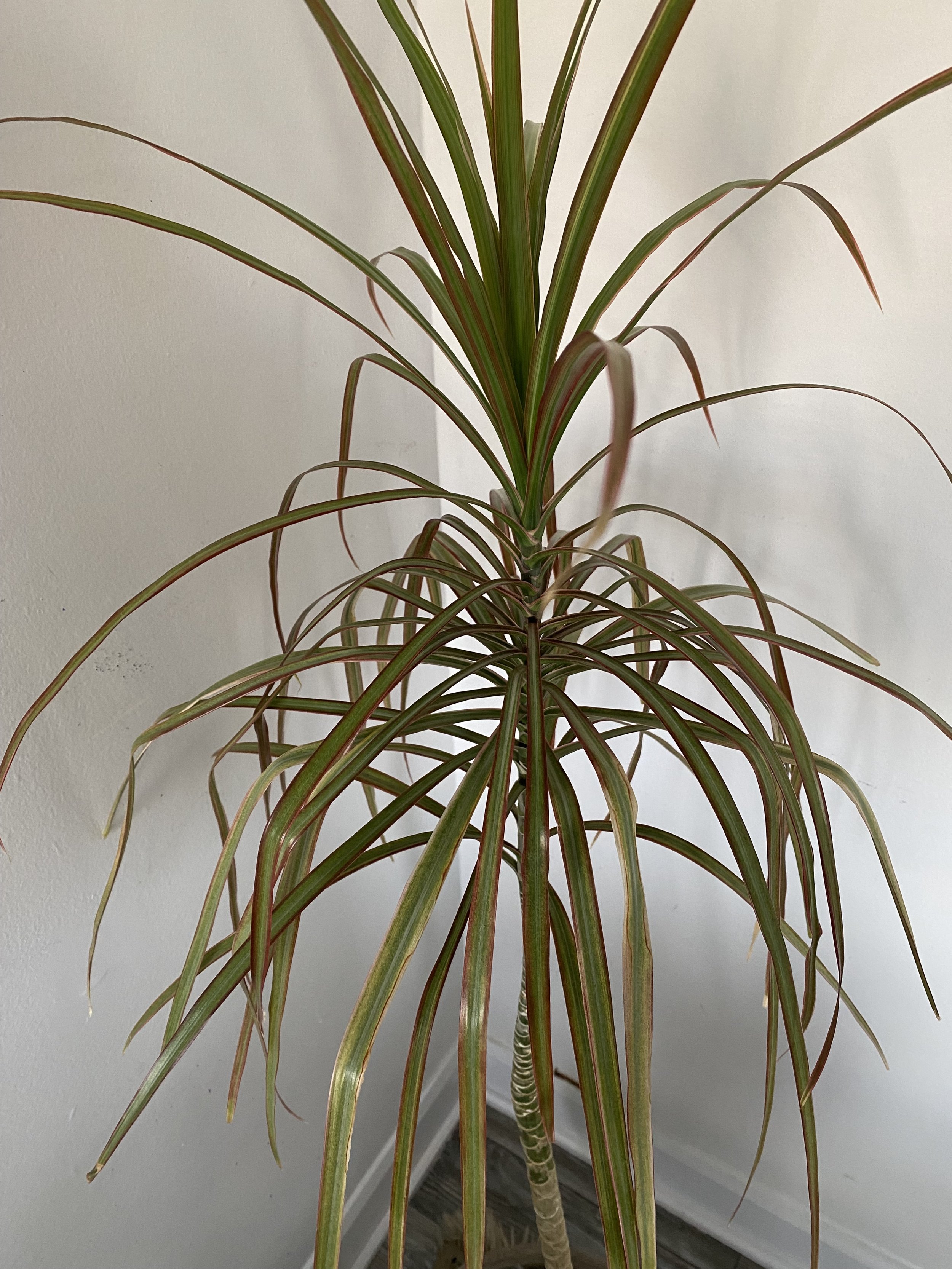Indoor Garden 2023
Originally published May 22, 2023
It has been a long hard winter: an unholy amount of snowfall, interchangeable weather that gave me whiplash and a freak freezing rain storm that caused power shortages throughout the city. So all in all, a typical winter in Montreal. However, by February, I was getting a serious case of winter fatigue and I just couldn't wait for the growing season to start. I literally couldn't wait...so I just went ahead and started sowing seeds like a crazy person. And even though it's still only May now and all my plants are officially hardened off and settling nicely in my balcony, there have been a few hits and misses already.
I will start off with my houseplants first as I feel that just the few tweaks I applied yielded massive results. I usually keep most of my houseplants in a large wooden shelving unit next to the living room window. However, the sides of the shelving unit were solid blocks of wood preventing any sunlight from reaching the plants. plants. Plus I get sunlight until mid-morning in my living room which means I had to move them around the house to the other rooms which were much more exposed for longer periods. Having said that, living in a south-east facing apartment with no nearby buildings or structures to obstruct sunlight means that I get great light (direct or diffused) for most of the day, even in winter.
1- Spider plants - Typically spider plants can thrive in low-light conditions. However, 2 of my spider plants were in the lower shelves of the cabinet and their leaves were starting to grow taller and so became bent because of the upper shelves. In addition, for the past couple of years I noticed the tips of the leaves turning brown (perhaps due to overwatering). So I moved the right one (in the image below) to my room and placed it on top of my chest of drawers- still not directly next to a window but my room is flooded with sunlight almost all day long until around 3 or 4pm. I would also place the spider plant on the windowsill for a few hours a day. As for their watering routine, I would water them in the winter once every 3 weeks with filtered water, whenever I noticed the soil is bone dry and the leaves start to droop. The middle one I moved to a small side table right by the living room window and the left one I kept in the same place. In just a couple of weeks, I noticed new growth and the leaves perked up and became a more vibrant green. All three plants look fuller in general and healthier and one of them have started sprouting tiny flowers which means I can cut them off and propagate more. There's still a bit of brown on the tips of the leaves but that's mostly on the old leaves.
2- Wandering Jew- There hasn't been much difference to this plant but again I gave it more sunlight and noticed new leaves growing. However, the stems and leaves are quite delicate and tend to break easily. Whenever one breaks I just stick it back in the soil.
3- Palm tree - This was a loan from my brother who asked me to take care of it while he was moving apartments, and he never took it back. So now it's mine. I placed this in a corner of my dining room that received less than hour of sunlight each morning, so I would move it to a spot under one of the bedroom windows that was more sun-exposed. I used to strip off the old yellowing fronds but I stopped doing that after I noticed the stem or bark getting thinner where the fronds were stripped off. After a couple of weeks of getting direct sunlight for at least 4-6 hours and watering once a month the plant bounced back and grew new fronds.
4- Mother of a Thousand Babies- This was a gift from a good friend of mine. Throughout the winter I placed this on a windowsill and new leaves started growing from the center and little nodes from the sides of the leaves, which I presume, are the "babies".
5- Monstera - In the almost 2 years that I've had this monstera, it barely grew any new leaves, even after I transplanted it into a larger container. Now conventional wisdom states that Monstera plants being tropical, understory plants don't require that much direct sunlight. That is not exactly true. I noticed that when I staked the leaves (which were getting out of hand), placed it next to a window that received direct sunlight for at least 5 hours a day and gave it a bit of fertilizer (at the beginning of spring), it grew at least 3 new leaves and looks more fuller now than it did a few months ago. It still has a long way to go, but I have the entire summer to give it a good dose of sunlight.
6- Pothos- Another stolen gift from my brother. Just like the other plants, this started growing new leaves with just a bit more exposure to direct sunlight. The watering routine is the same as almost all the other plants: I water whenever the top layer of soil is dried out.
7- Easter cactus- This cactus was another gift from my friend a couple of years ago. At the time I was told that it was a Christmas cactus because it is supposed to flower around the holiday season if not watered too much. It's an indoor cactus that does not require direct sunlight. Last year, I took the "don't water too regularly" part to the extreme and it was not looking too well. Over the winter and spring, I moved it to a window sill and gave it water more regularly. I immediately saw new growth of the cactus leaves and a few days before Easter, the first (and only) flower bloomed; a vibrant hue of ombre pink.
8- Coleus - This has to be the star of my indoor garden, and the one that has given me the most joy. It's grown into a tall shrub (around 30 inches, almost grazing the ceiling when placed on the top shelf) and due to increased exposure to direct sunlight the leaves have developed their signature dark pink center, even the inner leaves. I pinched off the small new growth because I wanted more girth and side shoots in the stems than height. It's unwieldy size is misleading as its stems are quite delicate and easily break off if not properly and gently handled, which is why I am terrified of transplanting it into a bigger pot. On the other hand, whenever a stem breaks off, back into the soil it goes. Over time, it's grown fuller. Even though I've staked the stems with sticks they have grown much t0o tall for the sticks and are starting to bend over, which means that soon I will have to brave the transplanting process. For now, I want to enjoy it as it is.









